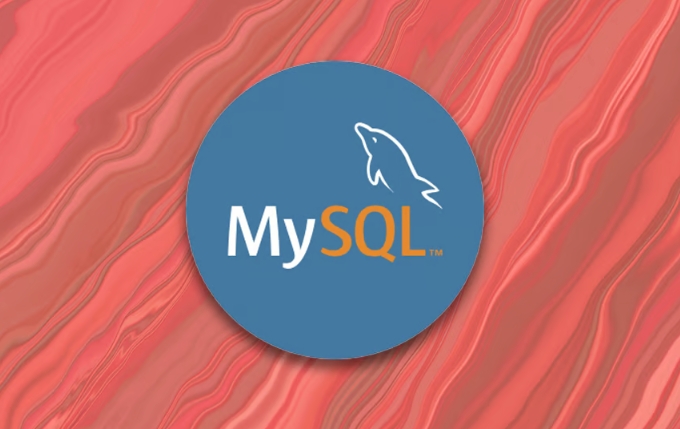MySQL table partitioning improves query performance and management efficiency by splitting big data into different physical storages. 1. Partition types include RANGE, LIST, HASH, and KEY, where RANGE is divided by value range and is suitable for time-class data; 2. To create a partition table, you need to specify a partition key (such as partitioning by year), and reasonably set the partition boundary; 3. You must use the partition key directly during query and avoid function wrapping to ensure that trigger partition cropping improves performance; 4. The partition key must be part of the primary key or unique index, otherwise the partition table cannot be created; 5. The partition structure needs to be maintained regularly, such as adding future years partitions to avoid data being concentrated in the bottom-up partition.

MySQL's Table Partitioning is an effective way to improve query performance and manage big data. If your data volume has reached millions or even tens of millions of records in a single table, the partition can help you "split" the data into different physical storage areas according to the rules, while maintaining a unified view of the logical table to the outside.

Here is a practical example to illustrate how table partitioning is used in MySQL, as well as its benefits and considerations.
What is table partitioning? Why use it?
Simply put, table partitioning is to divide a large table into multiple small pieces , each small piece is an independent physical subtable, but it is still a complete logical table for the user.

The benefits of using partitions include:
- Query performance improvement: especially for queries with time ranges or partition keys
- Faster data archiving or deletion: For example, clearing data for a certain month only requires deleting the corresponding partition
- Improve availability: If a partition has problems, it will not affect other partitions
Common partition types include RANGE, LIST, HASH, KEY, etc. We will demonstrate it with the most commonly used RANGE partition as an example.

How to create a RANGE partition table?
Suppose you have an order table orders containing the order creation time field created_at , and you want to partition by year.
CREATE TABLE orders (
id INT NOT NULL,
order_no VARCHAR(50) NOT NULL,
created_at DATE NOT NULL
)
PARTITION BY RANGE (YEAR(created_at)) (
PARTITION p2021 VALUES LESS THAN (2022),
PARTITION p2022 VALUES LESS THAN (2023),
PARTITION p2023 VALUES LESS THAN (2024),
PARTITION pmax VALUES LESS THAN MAXVALUE
);The above section of SQL creates a RANGE partition table divided by year:
- Each partition stores data for a specific year
-
pmaxis a bottom-up partition used to store all data larger than 2024
The advantage of this is that when you query the order for 2022, MySQL will only scan the p2022 partition, greatly reducing I/O and query time.
What points should be paid attention to when using partitions?
Although partitioning can bring performance improvements, it is not omnipotent. There are several key points to pay attention to:
? The partition key must be the primary key of the table or part of the unique index
If your table has primary keys or unique constraints, the fields used for partitioning must be included in these constraints. For example, if the primary key is (id, created_at) , you can use created_at as the partition key; but if the primary key is just id , you cannot use created_at to partition directly.
?? Not all queries can be partitioned and cropped (Partition Pruning)
MySQL can only scan relevant partitions if your query criteria contain partition keys and the format is appropriate. Otherwise, all areas will still be scanned, which is equivalent to no partition.
To give a counterexample:
SELECT * FROM orders WHERE DATE_FORMAT(created_at, '%Y') = '2022';
Although this query uses the created_at field, it cannot trigger partition cropping due to function wrapping, and the performance will not be improved.
The correct way to write it should be:
SELECT * FROM orders WHERE created_at >= '2022-01-01' AND created_at < '2023-01-01';
? Regularly maintain the partition structure
Over time, the original partition may not be enough. For example, in the above example, when entering 2025, all new data will be placed in the pmax partition. At this time, you need to manually add new partitions and adjust the old partition structure.
summary
Table partitioning is a very practical technology, especially suitable for processing large tables of time-class data. The following points should be paid attention to when designing partitioning strategies:
- The partition key should be reasonable and try to match the query conditions.
- Pay attention to the limitations of primary keys and unique indexes
- Avoid function operations on partition keys when writing query statements
- Regularly check and maintain partition structures
Basically that's it. Partitioning is not a once-for-all solution, but it does significantly improve performance in the right scenario.
The above is the detailed content of mysql table partitioning example. For more information, please follow other related articles on the PHP Chinese website!

Hot AI Tools

Undress AI Tool
Undress images for free

Undresser.AI Undress
AI-powered app for creating realistic nude photos

AI Clothes Remover
Online AI tool for removing clothes from photos.

Clothoff.io
AI clothes remover

Video Face Swap
Swap faces in any video effortlessly with our completely free AI face swap tool!

Hot Article

Hot Tools

Notepad++7.3.1
Easy-to-use and free code editor

SublimeText3 Chinese version
Chinese version, very easy to use

Zend Studio 13.0.1
Powerful PHP integrated development environment

Dreamweaver CS6
Visual web development tools

SublimeText3 Mac version
God-level code editing software (SublimeText3)

Hot Topics
 What is GTID (Global Transaction Identifier) and what are its advantages?
Jun 19, 2025 am 01:03 AM
What is GTID (Global Transaction Identifier) and what are its advantages?
Jun 19, 2025 am 01:03 AM
GTID (Global Transaction Identifier) ??solves the complexity of replication and failover in MySQL databases by assigning a unique identity to each transaction. 1. It simplifies replication management, automatically handles log files and locations, allowing slave servers to request transactions based on the last executed GTID. 2. Ensure consistency across servers, ensure that each transaction is applied only once on each server, and avoid data inconsistency. 3. Improve troubleshooting efficiency. GTID includes server UUID and serial number, which is convenient for tracking transaction flow and accurately locate problems. These three core advantages make MySQL replication more robust and easy to manage, significantly improving system reliability and data integrity.
 What is a typical process for MySQL master failover?
Jun 19, 2025 am 01:06 AM
What is a typical process for MySQL master failover?
Jun 19, 2025 am 01:06 AM
MySQL main library failover mainly includes four steps. 1. Fault detection: Regularly check the main library process, connection status and simple query to determine whether it is downtime, set up a retry mechanism to avoid misjudgment, and can use tools such as MHA, Orchestrator or Keepalived to assist in detection; 2. Select the new main library: select the most suitable slave library to replace it according to the data synchronization progress (Seconds_Behind_Master), binlog data integrity, network delay and load conditions, and perform data compensation or manual intervention if necessary; 3. Switch topology: Point other slave libraries to the new master library, execute RESETMASTER or enable GTID, update the VIP, DNS or proxy configuration to
 How to connect to a MySQL database using the command line?
Jun 19, 2025 am 01:05 AM
How to connect to a MySQL database using the command line?
Jun 19, 2025 am 01:05 AM
The steps to connect to the MySQL database are as follows: 1. Use the basic command format mysql-u username-p-h host address to connect, enter the username and password to log in; 2. If you need to directly enter the specified database, you can add the database name after the command, such as mysql-uroot-pmyproject; 3. If the port is not the default 3306, you need to add the -P parameter to specify the port number, such as mysql-uroot-p-h192.168.1.100-P3307; In addition, if you encounter a password error, you can re-enter it. If the connection fails, check the network, firewall or permission settings. If the client is missing, you can install mysql-client on Linux through the package manager. Master these commands
 Why do indexes improve MySQL query speed?
Jun 19, 2025 am 01:05 AM
Why do indexes improve MySQL query speed?
Jun 19, 2025 am 01:05 AM
IndexesinMySQLimprovequeryspeedbyenablingfasterdataretrieval.1.Theyreducedatascanned,allowingMySQLtoquicklylocaterelevantrowsinWHEREorORDERBYclauses,especiallyimportantforlargeorfrequentlyqueriedtables.2.Theyspeedupjoinsandsorting,makingJOINoperation
 Why is InnoDB the recommended storage engine now?
Jun 17, 2025 am 09:18 AM
Why is InnoDB the recommended storage engine now?
Jun 17, 2025 am 09:18 AM
InnoDB is MySQL's default storage engine because it outperforms other engines such as MyISAM in terms of reliability, concurrency performance and crash recovery. 1. It supports transaction processing, follows ACID principles, ensures data integrity, and is suitable for key data scenarios such as financial records or user accounts; 2. It adopts row-level locks instead of table-level locks to improve performance and throughput in high concurrent write environments; 3. It has a crash recovery mechanism and automatic repair function, and supports foreign key constraints to ensure data consistency and reference integrity, and prevent isolated records and data inconsistencies.
 What are the transaction isolation levels in MySQL, and which is the default?
Jun 23, 2025 pm 03:05 PM
What are the transaction isolation levels in MySQL, and which is the default?
Jun 23, 2025 pm 03:05 PM
MySQL's default transaction isolation level is RepeatableRead, which prevents dirty reads and non-repeatable reads through MVCC and gap locks, and avoids phantom reading in most cases; other major levels include read uncommitted (ReadUncommitted), allowing dirty reads but the fastest performance, 1. Read Committed (ReadCommitted) ensures that the submitted data is read but may encounter non-repeatable reads and phantom readings, 2. RepeatableRead default level ensures that multiple reads within the transaction are consistent, 3. Serialization (Serializable) the highest level, prevents other transactions from modifying data through locks, ensuring data integrity but sacrificing performance;
 What are the ACID properties of a MySQL transaction?
Jun 20, 2025 am 01:06 AM
What are the ACID properties of a MySQL transaction?
Jun 20, 2025 am 01:06 AM
MySQL transactions follow ACID characteristics to ensure the reliability and consistency of database transactions. First, atomicity ensures that transactions are executed as an indivisible whole, either all succeed or all fail to roll back. For example, withdrawals and deposits must be completed or not occur at the same time in the transfer operation; second, consistency ensures that transactions transition the database from one valid state to another, and maintains the correct data logic through mechanisms such as constraints and triggers; third, isolation controls the visibility of multiple transactions when concurrent execution, prevents dirty reading, non-repeatable reading and fantasy reading. MySQL supports ReadUncommitted and ReadCommi.
 How to add the MySQL bin directory to the system PATH
Jul 01, 2025 am 01:39 AM
How to add the MySQL bin directory to the system PATH
Jul 01, 2025 am 01:39 AM
To add MySQL's bin directory to the system PATH, it needs to be configured according to the different operating systems. 1. Windows system: Find the bin folder in the MySQL installation directory (the default path is usually C:\ProgramFiles\MySQL\MySQLServerX.X\bin), right-click "This Computer" → "Properties" → "Advanced System Settings" → "Environment Variables", select Path in "System Variables" and edit it, add the MySQLbin path, save it and restart the command prompt and enter mysql--version verification; 2.macOS and Linux systems: Bash users edit ~/.bashrc or ~/.bash_






